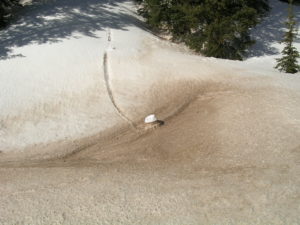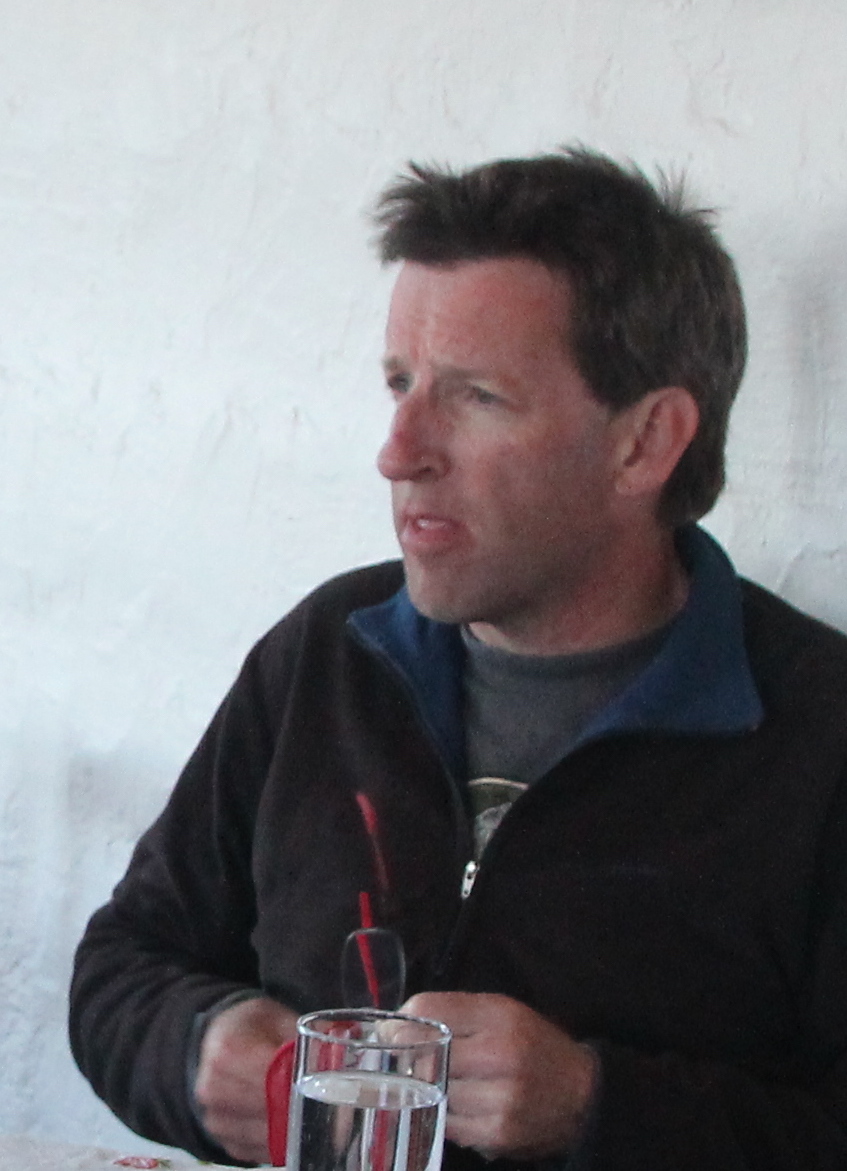 You know it when you see it. There it is, gathering again on the bookshelves and under the bed. It crunches between your teeth on windy days. You feel it underfoot while walking to the patio; wipe it off the windowsill with a moistened rag; scrawl “Wash Me” on the back of a delivery truck that’s been down a rural road. Everyone knows it. Nothing is more ubiquitous.
You know it when you see it. There it is, gathering again on the bookshelves and under the bed. It crunches between your teeth on windy days. You feel it underfoot while walking to the patio; wipe it off the windowsill with a moistened rag; scrawl “Wash Me” on the back of a delivery truck that’s been down a rural road. Everyone knows it. Nothing is more ubiquitous.
Ask around, though, and you find out that it’s maddeningly hard to say exactly what it is. A few years ago I asked a scientist who’d been studying it for 40 years for his definition.
“It’s in the eyes of the beholder,” he said. “There’s no strict technical definition. Maybe fine particles where you wouldn’t want or expect to find them.”
Everywhere, yet as elusive as the wind that carries it: that’s dust. You might settle for pinning it down, a bit desperately, by saying that it is in fact exactly what cannot be pinned down. It moves, period. It’s the stuff that comes from elsewhere and stops for only a spell. Sometimes it’s subtle: a film, a haze, a dancing wisp, a diaphanous shimmer in the distance. Sometimes it’s unavoidable. In the windy spring of 1935 an itinerant singer named Woody Guthrie huddled for shelter in a dirt-blackened north Texas shack, humming “so long, it’s been good to know ya” for the first time as a black norther roared outside, provoking thoughts of the end of the world and dropping four or five tons of powdered soil on every acre of the southern plains. The air was so thick that a light bulb—inside the house—looked like a glowing cigarette. And so Woody, like so many others, moved on. Maybe he’d read how in medieval times, sweeping dust out the front door was said to bring bad luck—better, perhaps, to move yourself?
Three weeks ago I flew from Phoenix to the Midwest and somewhere over Colorado looked down at a mountain range that formed a white island in a sea of gray and green.
White? Not really. In fact the white of the snow was tinged with rose-pink. This range had been dusted. The spring winds had lofted the top layer of the upwind desert into the air, from where it had fallen onto the snow. It’s something that happens almost every spring in Colorado.
Which might seem just a quirk of geography and geology, and perhaps an inconvenience to skiers, except that dusty snow melts a lot faster than the pristine white variety. When Ötzi the Iceman thawed from an icefield on the Italy-Austria border in September 1991, more than 50 centuries after his death, it was because southerly winds a few months earlier had carried a load of yellow dust from the Sahara to the Alps, causing the snow and ice to melt more readily than usual. In Colorado’s San Juan Mountains, the effect of dust on snow in recent years has been to cause melting of the snowpack as much as a month ahead of average, which wreaks havoc on the calculations of water managers.
Some years ago, I was backpacking with a couple of friends in the Arizona desert, down along the Mexico border. We’d spent a few spring days traversing the granitic mountains and the silty creosote flats under pristine blue skies. Then, on our last day out, the sky disappeared. A thick, yellow-gray haze had moved in during the night. Crossing our last creosote flat, we couldn’t anymore see the mountains that bounded it; then, as we got closer, they loomed like an oceanic coast rising from salt haze.
I’d experienced dust clouds in the desert before. But this was different. This time there wasn’t any wind. The haze seemed unrelated to the ground below. It was a stranger, a visitor from somewhere else.
Not until we got home did we read in the papers how gale-force winds had roiled the Gobi Desert, kicking up a huge dust cloud that crossed China and the Pacific Ocean and swept over North America. On satellite images you could watch it reaching the Atlantic Ocean. The concentration of airborne soil particulates at a measuring station in the Canyonlands region spiked at a record high. Across the continent, sunsets were grand.
I had to think about dust again when I returned back from my Midwest trip. The plane from Phoenix landed bumpily under billowing clouds, and then we all walked out into a pelting snowstorm. “What?” said the New Yorker who’d sat next to me. “It was 75 in Phoenix!” By the time I reached the parking lot the pellets were coming horizontally. By the time I reached my truck they’d piled up enough that I had to engage the wipers to sweep away the ice. By the time I got home the wet snow was piling up on every twig and branch. Springtime in Flagstaff!
Of course the snow melted quickly. It was April, after all. But what I noticed afterwards is how it left a residue: a smear of dirt on the patio and on windshield. This had been dirty snow, formed around seed particles of dust lofted up somewhere to the south.
Like the Gobi Desert, the Southwest has become a dustier place as cars, ATVs, and livestock loosen the soil and allow it to loft up in the spring winds. The spectacular red sunsets that lasted for a few days that past April were the result not just of nature doing its thing, but of people doing theirs: growing in number, moving on, testing nature’s limits.
Maybe that’s the real reason we can’t help but notice dust on the move. Maybe our fascination rests in our affinity. Whether red-eyed folk singers or wide-eyed scientists or irritated homeowners plugging the vacuum cleaner in once again, aren’t we all made of exactly the same stuff, as Genesis tells us, and so aren’t we all vagrant parcels of footloose dust ourselves?

